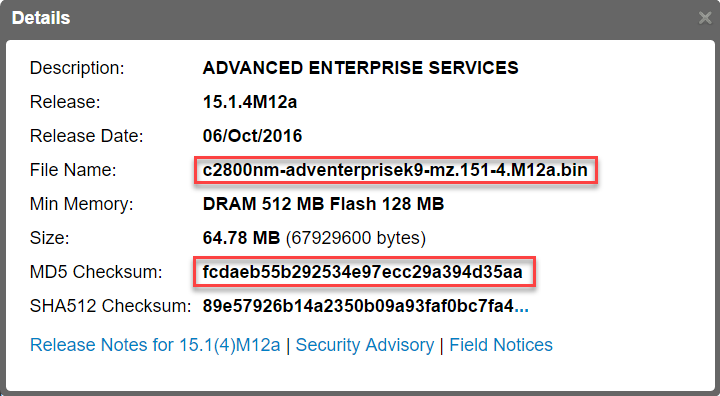

Many different IOS versions provide support for specific platforms.
#Cisco ios xe version software#
After the software has been tested thoroughly, it is rolled into the mainline release. The T train is used to add the newest features and platforms. (They go through the release process shown in the previous section.)
#Cisco ios xe version update#
Other more specialized versions of IOS are rolled into the mainline as an update when they have been sufficiently tested.

These releases tend to be the most stable and include support for most of the available platforms. The 12 base versions are also referred to as the mainline release of a version. IOS Version 12 has a few different ways to notate version, including those shown in Figure1. With IOS Version 12, many different sub-versions of IOS exist, including specialized support for specific platforms the next few sections cover a couple of the most common. This article takes a look at a few of these and how what they are used for.

MD releases (called M releases, or extended release) will be released and have a 44-month support window, whereas ED (T releases, or standard release) will have a 18-month support window.Ī number of different versions exist within each release of IOS.
#Cisco ios xe version code#
With IOS 15 and later, the code bases will be consolidated. With earlier versions of IOS, the different ED (T trains for instance, 12.4T) and MD (not T trains for instance, 12.4) has different code bases. The IOS train paths have also been consolidated. New releases will be considered either ED or MD. With IOS 15 and later, both the LD and GD deployments will be retired. Maintenance Deployment (MD): These releases are used to provide additional support for bug fixes and ongoing software maintenance. These tend to be stable on almost all platforms. General Deployment (GD): These releases can be used anywhere in a customer network with the same feature and functionality requirements. LD releases are between an ED release and a GD release. Limited Deployment (LD): These releases do not include any new features or platform support but do include bug fixes. With versions of IOS earlier than 15, a specific image could be considered one of the following four different release types:Įarly Deployment (ED): These releases provide both new features and new platform support in addition to bug fixes. One term that is often used is the IOS release type. Although this is not an exhaustive list of every Cisco version, it does cover the most commonly used versions. This article covers these different releases and aims to give a single location where network engineers can look to figure out what the different releases mean. Although the naming used for some of the newer devices is changing to a simpler structure, it will be a while before all the different versions are consolidated. One thing that is often confusing to any network engineer (regardless of level) is the version and naming structure used by Cisco for their IOS images.


 0 kommentar(er)
0 kommentar(er)
